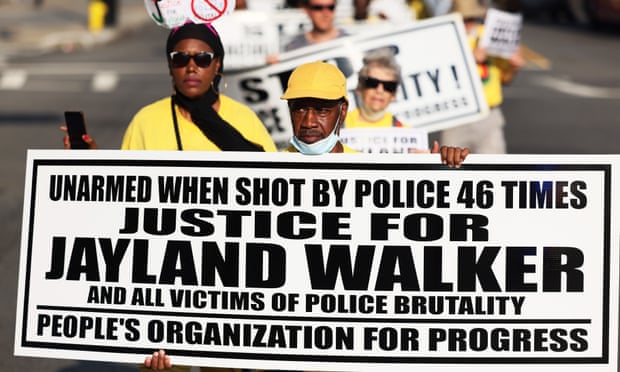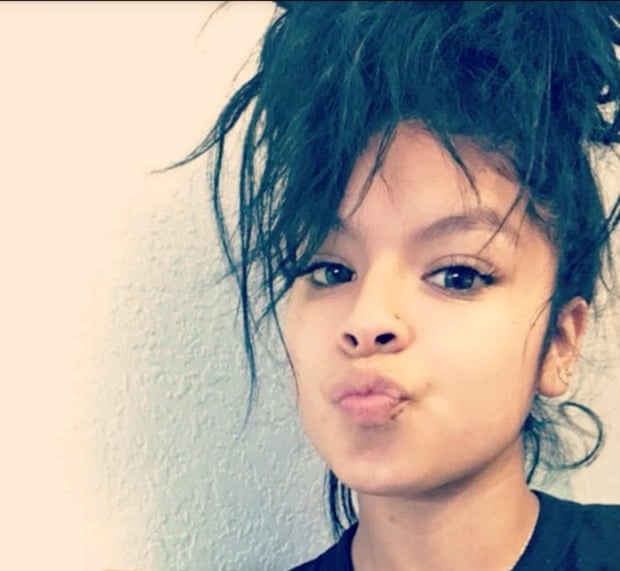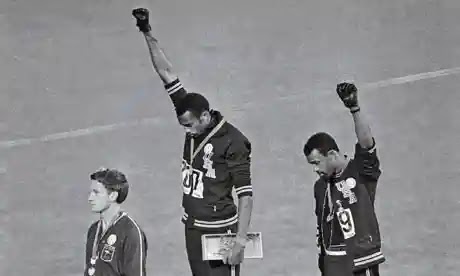I will be gone for the next few days attending the Newport Jazz Festival and with that I rarely read or follow news as it is harder and harder to find an actual physical copy of a New York Times and with that I simply just headline read to see if there is an issue of import I should read when I get back to the hotel and can sit on my Ipad to do so. But with that I am also better off as I often want to discuss what I have read and since few if any people actually read anything, let alone newspapers, it enables me to find less to talk about and less inclined to talk at all. I wrote about the strange encounters with the couples in Saratoga Springs, which only confirmed what I had long known, MAGA people are white, educated, professionals and they are afraid of “others” taking what they have earned and in turn be “given” what they were not. So this is about self interest and self preservation and with that it is seeded in two factors – Racism and Elitism. So as they drive off in their Mercedes which they are paying for via credit that also discriminates, they will never have to worry about the traffic stop and being found dead by the side of the road. I can assure you I used to drive a Mercedes, was stopped in Arizona and the State Police Officer, a woman, threatened to shoot my dog who was barking and afraid as stepped out of the vehicle to make it so there was no risk to Emma. Emma was not outside of the car she was fine in the back seat just doing what dogs do but this woman wanted me to be complacent and afraid, it worked. I sat down on the road and begged her to not do this leading the other Officer to intervene and proceed with the infraction portion of the ticket. Which I never paid and never heard a thing from the Arizona State Police again. Nor ever will ever go back there. They can fuck themselves. But my encounters with Police to this day are still highly charged and in turn things I go out of my way to avoid. Even if I saw a crime committed I am not engaging or getting involved, I fear the Police more. They too can go fuck themselves.
So with that I leave you with this article from the Guardian with regards to the majority of Police Shootings and how they end up with the stats that show 1 out of 3 end up dead in such a similar encounter and that they were fleeing from the scene. I cannot understand that mentality as I could not nor would not in any encounter as I could not outrun a cop, let alone a gun and I have never felt compelled to do so. Lay prone in the street, fall down on hands and knees begging yes, but run no. That said, it does not excuse the slime bag Police from shooting and killing these individuals. I have again no respect for this profession as again I point to Uvalde or to the Highland Park shooter stopped in traffic, the Buffalo shooter or in fact Parkland who was also stopped by Police in a parking lot. Bitch please had these boys been not white, the outcome would have been very different.
‘Hunted’: one in three people killed by US police were fleeing, data reveals
In many cases, the encounters started as traffic stops or there were no allegations of violence or serious crimes
Sam Levin in Los Angeles The Guardian 28 Jul 2022
Nearly one third of people killed by US police since 2015 were running away, driving off or attempting to flee when the officer fatally shot or used lethal force against them, data rev
In the past seven years, police in America have killed more than 2,500 people who were fleeing, and those numbers have slightly increased in recent years, amounting to an average of roughly one killing a day of someone running or trying to escape, according to Mapping Police Violence, a research group that tracks lethal force cases.
In many cases, the encounters started as traffic stops, or there were no allegations of violence or serious crimes prompting police contact. Some were shot in the back while running and others were passengers in fleeing cars.
Two recent cases have sparked national outrage and protests. In Akron, Ohio, on 27 June, officers fired dozens of rounds at Jayland Walker, who was unarmed and running when he was killed. And last week, an officer in San Bernardino, California, exited an unmarked car and immediately fired at Robert Adams as he ran in the opposite direction.
Despite a decades-long push to hold officers accountable for killing civilians, prosecution remains exceedingly rare, the data shows. Of the 2,500 people killed while fleeing since 2015, only 50 or 2% have resulted in criminal charges. The majority of those charges were either dismissed or resulted in acquittals. Only nine officers were convicted, representing 0.35% of cases.
The data, advocates and experts say, highlights how the US legal system allows officers to kill with impunity and how reform efforts have not addressed fundamental flaws in police departments.
“In 2014 and 2015, at the beginning of this national conversation about racism in policing, the idea was, ‘There are bad apples in police departments, and if we just charged or fired those particularly bad officers, we could save lives and stop police violence,’” said Samuel Sinyangwe, data scientist and policy analyst who founded Mapping Police Violence, but “this data shows that this is much bigger than any individual officer.”
‘Hunted down’
US police kill more people in days than many countries do in years, with roughly 1,100 fatalities a year since 2013. The numbers haven’t changed since the start of the Black Lives Matter movement, and they haven’t budged since George Floyd’s murder inspired international protests in 2020.

People in Newark, New Jersey, march demanding justice for Jayland Walker in July 2022. Photograph: Michael M Santiago/Getty Images
The law has for years allowed police to kill civilians in a wide variety of circumstances. In 1985, the US supreme court ruled that officers can only use lethal force against a fleeing person if they reasonably believed that person was an imminent threat. But the court later said that an officer’s state of mind and fear in the moment was relevant to determining whether the shooting was warranted. That means a killing could be considered justified if the officer claimed he feared the person was armed or saw them gesturing toward their waistband – even if it turned out the victim was unarmed and the threat was nonexistent.
As a result, very few police officers get charged. Adante Pointer, a civil rights lawyer, said it was not hard for officers to prevail when the case boiled down to what was going through the minds of the officer and victim in the moment: “The only person left to tell the story is the cop.”
In 2022 through mid-July, officers have killed 633 people, including 202 who were fleeing. In 2021, 368 victims were fleeing (32% of all killings); in 2020, 380 were fleeing (33%); and in 2019, 325 were fleeing (30%), according to Mapping Police Violence. The data is based on media reports of people who were trying to escape when they were killed, and it is considered incomplete. In roughly 10% to 20% of all cases each year, the circumstances surrounding the shootings are unclear.
Black Americans are disproportionately affected, making up 32% of individuals killed by police while fleeing, but only accounting for 13% of the US population. Black victims were even more overrepresented in cases involving people fleeing on foot, making up 35% to 54% of those fatalities
“If a person is running away, there is no reason to chase them, hunt them down like an animal and shoot and kill them,” said Paula McGowan, whose son, Ronell Foster, was killed while fleeing in Vallejo, California, in February 2018. The officer, Ryan McMahon, said he was trying to stop Foster, a 33-year-old father of two, because he was riding his bike without a light. Within roughly one minute of trying to stop him, the officer engaged in a struggle and shot Foster in the back of the head. Officials later claimed that the unarmed man had grabbed his flashlight and presented it “in a threatening manner”.
“These officers are too amped up and ready to shoot,” said McGowan, who for years advocated that the officer be fired and prosecuted. Instead, the officer went on to shoot another Black man, Willie McCoy, one year later; he was one of six officers who fatally shot the 20-year-old who had been sleeping in his car. The officer was terminated in 2020 – not for killing McCoy or Foster, but because the department said he put other officers in danger during the shooting of McCoy.
The city paid Foster’s family $5.7m in a civil settlement in 2020, but did not admit wrongdoing. A lawyer for McMahon previously said the officer was attempting to “simply talk to Mr Foster” when he fled, adding that McMahon “believed his actions were reasonable under the circumstances”.Vallejo police did not respond to a request for comment.
“Not only do these officers get away with it, they get to move on to bigger and better jobs while we’re left shattered and are still trying to pick up the pieces,” said Miguel Minjares, whose niece, 16-year-old Elena “Ebbie” Mondragon, was killed by Fremont, California, police.

Elena “Ebbie” Mondragon was killed by Fremont police in March 2017. Photograph: courtesy of Miguel Minjares
In March 2017, undercover officers fired at a car that was fleeing, striking Mondragon, who was a passenger and pregnant at the time. The officers faced no criminal consequences. One sergeant went on to work as a sniper for the department, though has since retired, and another involved in the operation continued working as a training officer, records show.
“You shoot into a moving car, which you shouldn’t have done, and you weren’t even close to hitting the person you were trying to target. And now you’re a sniper?” said Minjares. “When I hear sniper, I think of precision. It boggles my mind. It shows the entitlement of officers and the police department, they just put people where they want them, it doesn’t matter what they did. It’s confusing and it’s heart wrenching.”
In June, five years after the killing, the family won $21m in a civil trial, but it’s unclear if Fremont has changed any of its policies or practices.
A Fremont spokesperson declined to comment on the Mondragon case and did not respond to questions about its policies.
The push to prevent the killings
In the rare cases when prosecutors do file criminal charges against police who killed fleeing people, the process often takes years and typically concludes with victory for the officer, either with judges or prosecutors themselves dismissing the charges or jury acquittals.

Robert Adams, 23, was fatally shot by police as he ran away Photograph: Courtesy of family
In one Florida case where an officer was investigating a shoplifting and fatally shot a man fleeing in a van, prosecutors filed charges and then dropped the case a week later, saying that after a review of evidence, it “became apparent it would be incredibly difficult to obtain a conviction”. In a Hawaii case where officers killed a 16-year-old in a car, a judge last year rejected all charges and prevented the case from going to trial.
For the nine fleeing cases where officers were found guilty or signed a plea deal, the conviction and sentence were much lighter than typical homicides. A Georgia officer who killed an unarmed man fleeing on foot was acquitted of manslaughter in 2019, for example, but found guilty of violating his oath and given one year in prison. A San Diego sheriff’s deputy pleaded guilty earlier this year to voluntary manslaughter after he killed a fleeing man, but he avoided state prison, instead getting one year in jail. And a Tennessee deputy, found guilty of criminally negligent homicide after shooting at a fleeing car and killing the passenger, a 20-year-old woman, was sentenced to community service.
Not only do these officers get away with it, they get to move on to bigger and better jobs while we’re left shattered and are still trying to pick up the pieces.
Miguel Minjares
With the criminal system deeming nearly all of these killings lawful, advocates have argued that cities should reduce the unnecessary police encounters that can turn deadly, such as ending traffic stops for minor violations and removing police from mental health calls. There’s also been a growing effort to ban officers from shooting at moving cars.
California passed a major law in 2019 meant to restrict use of deadly force to cases when it was “necessary” to defend human life, not just “reasonable”, and stating that an officer can only kill a fleeing person if they believe that person is going to imminently harm someone. The new law also dictated that prosecutors must consider the officer’s actions leading up to the killing, which police groups had arguedwere irrelevant under the previous standards.
But after its passage, police departments across the state refused to comply and update their policies, said Adrienna Wong, senior staff attorney at the ACLU of southern California, which backed the bill. That’s only now starting to change after years of legal disputes.
“I think we’re going to start to see prosecutors consider all the elements of the new law, but I’m frankly not holding my breath based on the track record of prosecutors in the state. We never thought this law was going to be a full solution.”









